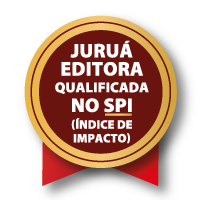The application of legal design and visual law in promoting access to justice in Brazil
DOI:
https://doi.org/10.19135/revista.consinter.00018.01Keywords:
Justice 4.0, optimized justice, access to justice, Legal Design, Visual LawAbstract
This article aims to analyze the use of Legal Design and Visual Law as contributions to optimizing access to justice within the Brazilian Judiciary. Techniques of indirect bibliographic and documentary research and deductive methods are employed. The potential of Legal Design as a dynamic support to the Brazilian Justice System is discussed, as it provides tools and interfaces capable of facilitating the communicative process in the legal field. Visual Law is mentioned as the materialization of Legal Design focused on the user experience of legal products or services. In concluding remarks, it is emphasized that Legal Design and Visual Law, as operational movements focused on improving legal communication and user experience, are capable of aiding in the purpose of optimizing access to justice, a fertile field for future empirical studies as good practices in this environment become more widespread.
Downloads
References
AZEVEDO, André Gomma de, Desafios de Acesso à Justiça ante o Fortalecimento da Autocomposição como Política Pública Nacional, In: Conciliação e mediação: estruturação da política judiciária nacional, Rio de Janeiro, Forense, 2011.
AZEVEDO E SOUZA, Bernardo de, Mais de 70% dos juízes brasileiros são favoráveis ao Visual Law, Disponível em https://bernardodeazevedo.com/conteudos/mais-de-70-dos-juizes-brasileiros-sao-favoraveis-ao-visual-law/, Acesso em 1 set. 2022.
BARBAROUX, Marine, Untangling Ux, Part 1: Design Thinking vs UCD, Cambridge Consultants, 2016, Disponível em https://www.cambridgeconsultants.com/us/node/33036, Acesso em 1 set. 2022.
BRASIL, Conselho Nacional de Justiça, Justiça em Números 2004, Brasília, CNJ, 2004, Disponível em https://www.cnj.jus.br/wp-content/uploads/2011/02/justica_numeros_2003.pdf, Acesso em 30 abr. 2023.
BRASIL, Conselho Nacional de Justiça, Justiça em Números 2022, Brasília, CNJ, 2022, Disponível em https://www.cnj.jus.br/wp-content/uploads/2022/09/justica-em-numeros-2022.pdf, Acesso em 5 set. 2022.
BRASIL, Conselho Nacional de Justiça, Justiça 4.0, Disponível em https://www.cnj.jus.br/tecnologia-da-informacao-e-comunicacao/justica-4-0/, Acesso em 31 abr. 2023.
BRASIL, Conselho Nacional de Justiça, Macrodesafios 2021-2026, Disponível em https://www.cnj.jus.br/gestao-estrategica-e-planejamento/estrategia-nacional-do-poder-judiciario-2021-2026/processo-de-formulacao/macrodesafios-2021-2026, Acesso em 31 abr. 2023.
BRASIL, Conselho Nacional de Justiça, Resolução 395, de 7 de junho de 2021, Disponível em https://atos.cnj.jus.br/files/original1259312021060960c0bb3333a4f.pdf, Acesso em 31 abr. 2023.
BRASIL, Tribunal de Justiça do Rio Grande do Sul, Petição 10, Sentença 10, Disponível: https://www.tjrs.jus.br/novo/comunicacao/acoes-e-programas-institucionais/peticao-10-sentenca-10/, Acesso em 4 de set. 2022.
BRASIL, Tribunal Regional do Trabalho 13ª Região, Juiz da 5ª VT usa ferramenta de inovação tecnológica Visual Law para simplificar decisões judiciais, Poder Judiciário, 2021. Disponível em https://www.trt13.jus.br/informe-se/noticias/juiz-usa-ferramenta-de-inovacao-tecnologica-visual-law-para-simplificar-decisoes-judiciais-1. Acesso em 5 de set. 2022.
BRASIL, Tribunal Regional Federal da Quarta Região, Prêmio Inspiralize 4JF, Disponível em https://wegov.com.br/inspiralize-4jf/, Acesso em 10 mai. 2023.
BRITTO, Melina Carla de Souza; CRUZ, Fabrício Bittencourt da. Visual Law e inovação: uma nova percepção para o processo eletrônico no direito brasileiro, Humanidades & Inovação, v. 8, p. 226-234, 2021.
BROWN, Tim, Design Thinking, Harvard Business Review, 2008, Disponível em https://readings.design/PDF/Tim%20Brown,%20Design%20Thinking.pdf, Acesso em 1 set 2022.
COPACK MUNIZ, Laryssa Angelica. Resumo de Sentença, Disponível em https://www.premioinnovare.com.br/pratica/resumo-de-sentenca/71, Acesso em 31 abr. 2023.
CRUZ, Fabrício Bittencourt da, CNJ concede Selo Justiça em Números a 56 tribunais, Disponível em https://www.cnj.jus.br/cnj-concede-selo-justica-em-numeros-a-56-tribunais/, Acesso em 31 abr. 2023.
CRUZ, Fabrício Bittencourt da; FLORENZANO, Karina Mara Bueno Gurski; CEZEREVATY, João Leandro; PINHEIRO, Helena Swiech, Você Sabe com quem está falando?, Disponível em https://miro.com/app/board/uXjVMWfI8-8=/, Acesso em 7 mai. 2023.
DOHERTY, Michael, Comprehensibility as a rule of law requirement: the role of legal design in delivering access to law, Journal of Open Access to Laws, Volume 8, N. 1, 2020.
HAGAN, Margaret, Law by Design, Disponível em https://lawbydesign.co/legal-design/, Acesso em 7 ago. 2022.
HOLTZ, Ana Paula Ulandowski; COELHO, Alexandre Zavaglia. Legal Design Visual Law: Comunicação entre o universo do Direito e os demais setores da sociedade, RT. Thomson Reuters, 2020, E-book, Disponível em https://www.thomsonreuters.com.br/content/dam/openweb/documents/pdf/Brazil/white-paper/legal-one-e-book-visual-law-2020.pdf, Acesso em 7 mai. 2023.
JI, Xiaoyu, Where design and law meet, An empirical study for understanding legal design and its implication for research and practice. Department of Design. Aalto University School of Arts, Design and Architecture, Helsinki, 2019.
MAIA, Ana Carolina; NYBO, Erik Fontenele; CUNHA, Mayara, Legal design: criando documentos que fazem sentido para os usuários, São Paulo: Saraiva, 2020, E-book.
MIK, Eliza, The limits of Visual Law, Journal of Open Access to Law, Volume 8, N. 1, 2020, Disponível em https://ojs.law.cornell.edu/index.php/joal/article/view/104/99, Acesso em 4 de set. 2022.
NUNES, Dierle; RODRIGUES, Larissa Holanda Andrade Rodrigues, O Contraditório e sua implementação pelo Design, Design Thinking, Legal Design e Visual Law como abordagens de Implementação Efetiva da Influência, In: Inteligência Artificial e Direito Processual: Os Impactos da Virada Tecnológica no Direito Processual, Salvador, Editora JusPodivm, 2020.
Published
How to Cite
Issue
Section
License
Copyright (c) 2024 Gabrielle Santangelo Leiner, Mayna Marchiori de Moraes Dykstra, Fabrício Bittencourt da Cruz

This work is licensed under a Creative Commons Attribution-NonCommercial-ShareAlike 4.0 International License.
For universalization and free sharing of knowledge, CONSINTER Journal is indexed under the Creative Commons 4.0 License
Attribution – Non-Commercial Use – Sharing by the same 4.0 Brazil license.
It’s allowed:
– Copy, distribute, display and execute the work
– Create derivative works
Under the following conditions:
ATTRIBUTION
You must give credit to the original author, as specified by the author or licensor.
NON-COMMERCIAL USE
You may not use this work for commercial purposes.
SHARING BY THE SAME LICENSE
If you change, transform, or create another work based on it, you may only distribute the resulting work under a license identical to this one.
For each new use or distribution, you must make clear to others the license terms for this work.
Legal License (full license): https://creativecommons.org/licenses/by-nc-sa/4.0/deed.pt_BR









